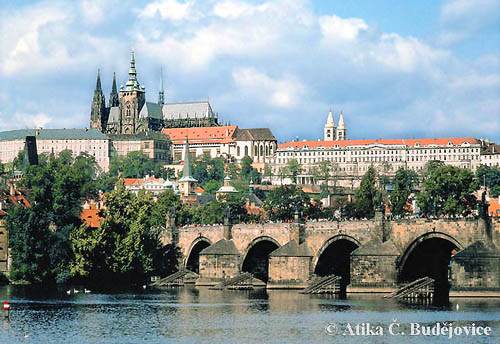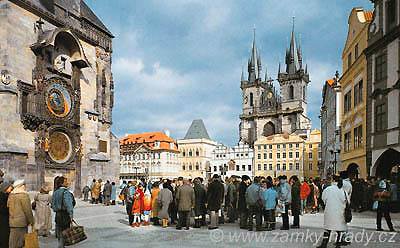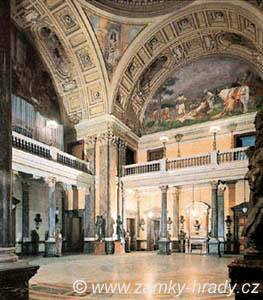Praha
 Informační centrum, 5.května 18, Praha
Informační centrum, 5.května 18, Praha
Tel. +420 241 404 483

Almost in the centre of the Czech Land Prague Castle, looking more like a fortified settlement than a medieval castle was founded by the Přemyslids in the 9th. century. One by one, under its protection, each of the Prague towns were established and grew. Prague flourished during the reign of Charles IV, and the Jagellon reign of the Gothic period enriched it futher. Prague gained fame for its Baroque period architecture, changign the character of a town which until then had been predominantly Gothic.

Charles' bridge - As early as 1170 the both sides of the Vltava river were connected by so called bridge of Judith which lasted till 1342 when it was destroyed by high water. The new bridge was established by the emperor Charles IV in 1357, the work of 16 arcs was built by smelting house of St. Wenceslaus under the direction of Peter Parléř and it was completed during the life of the founder. During 1683 - 1720 the major sculptors of Czech Baroque decorated the bridge by thirty statues : Ferdinand M. Brokof, Matyas M. Braun, Matěj V. Jäckel, Jan O. Mayer and others.

National Museum. The main Prague square, St. Wenceslaus square, is dominated by a monumental Neo-Renaissance building of the National Museum built during 1885 - 1890 according to the project of Josef Schulze. The building has a closed oblong shape with two internal yards separated from each other by a transversal wing with a stairway hall. The theme of the inner decoration is connected with the national program. The statues History and Natural Sciences by sculptor Mauder symbolize the main orientation of the museum (historical and natural collections). Among the interiors stands out the program decoration of the central Pantheon with wall paintings of František Ženíšek, Václav Brožík and Vojtěch Hynais which depict the most glorious periods of the Czech history.

 Informační centrum, 5.května 18, Praha
Informační centrum, 5.května 18, Praha
 Informační centrum, 5.května 18, Praha
Informační centrum, 5.května 18, Praha


